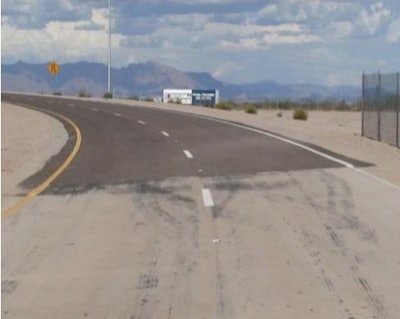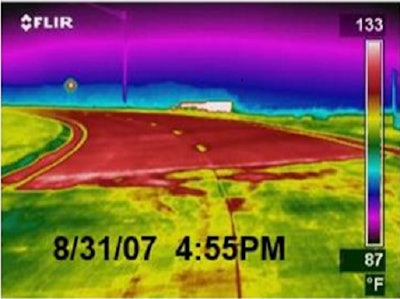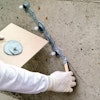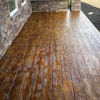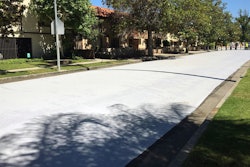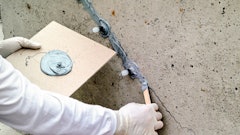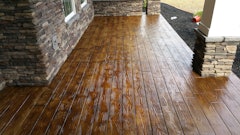
As one of U.S.’ hottest cities, it isn’t surprising that Phoenix is actively seeking ways to reduce air temperatures and improve the health and comfort of its residents. In Maricopa County, news outlets regularly report record-breaking heat. August 2020 was the hottest month on record since 1896 (when record-keeping began). On June 17, 2021, a temperature of 118º F matched the hottest day recorded in any month during 2020. Furthermore, 323 heat-associated deaths were reported by Maricopa County in their final report for 2020 (the most recent year for which data is available). This figure represented a 62.3% increase from 2019 and was 15 times the amount from 2001. In the context of the overall U.S., the CDC reported an average of 702 heat-related deaths annually during the time period from 2004 to 2018.
With Arizona suffering disproportionately, the contribution to the problem made by the 8,000 acres of regional freeway is coming under scrutiny. Paved surfaces absorb and store heat during the day and release it overnight, elevating ambient temperatures. This phenomenon is known as the Urban Heat Island (UHI) effect. With paved surfaces comprising about 40% of the urban land area in Phoenix, they are often considered one of the primary causes of the UHI. In response, the City of Phoenix Street Transportation Department and Office of Sustainability has been piloting a cool pavements program since 2020. The program is being conducted in partnership with Arizona State University (ASU).
In September 2021, year one results were presented by scientists from ASU's Global Institute of Sustainability and Innovation, Healthy Urban Environments, and the Urban Climate Research Center. A key finding was that light-colored reflective pavement surface temperatures are considerably lower than those of traditional roadway pavement. This is because light-colored surfaces generally reflect heat energy, while dark ones absorb it.
One cool pavement strategy, and the one used by the Phoenix research team, is to apply a reflective coating (made with light-colored pigments) to existing dark-colored asphalt. But Arizona has used concrete pavement—a naturally cool pavement solution—since the 1920s, and forty years of success with the material led to its use when the state’s main highways were being built in the 1960s. While many miles of concrete were covered with an asphalt rubber friction course (ARFC) in the early 2000s, the design life for that material has reached an end, and the Arizona Department of Transportation (ADOT) has been actively exploring options for more sustainable, affordable pavement solutions.
Research on Concrete Pavement Temperatures
Studies conducted over the past few decades demonstrate that concrete is cooler than asphalt. Using concrete as a finished driving surface would eliminate the need to apply additional reflective toppings to a pavement. In 2004 and 2005, the Portland Cement Association contracted with ASU to study not simply the benefits of reflective pavement, but the difference in thermal impact between concrete and asphalt surfaces. In their report “The Thermal and Radiative Characteristics of Concrete Pavements in Mitigating Urban Heat Island Effects,” the team identified the albedo (i.e., a surface's degree of reflectance) of various concrete pavement surfaces and mix types and collected pavement temperatures at several field sections. Laboratory tests were also conducted and pavement heat absorption and transfer modeling was developed. As seen in Figure 1 (below), portland cement concrete (PCC) was more than 20º F cooler than asphalt pavement at their peak temperatures.
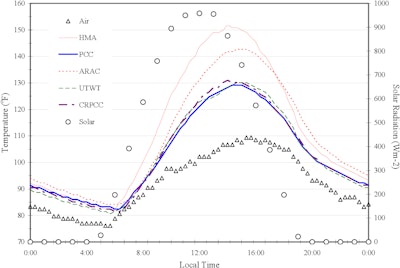 Figure 1. Pavement Materials Temperature Comparison. The Thermal and Radiative Characteristics of Concrete Pavements in Mitigating Urban Heat Island Effects; Kaloush, Carlson, Golden, Phelan. Legend: HMA – Hot Mix Asphalt, PCC – Portland Cement Concrete, ARAC – Asphalt Rubber Asphalt Concrete, UTWT – Ultra Thin White Topping, CRPCC – Crumb Rubber Portland Cement Concrete. Hourly solar data from Arizona Meteorological (AZMET) Station Mesa, Arizona.Semanticscholar.org
Figure 1. Pavement Materials Temperature Comparison. The Thermal and Radiative Characteristics of Concrete Pavements in Mitigating Urban Heat Island Effects; Kaloush, Carlson, Golden, Phelan. Legend: HMA – Hot Mix Asphalt, PCC – Portland Cement Concrete, ARAC – Asphalt Rubber Asphalt Concrete, UTWT – Ultra Thin White Topping, CRPCC – Crumb Rubber Portland Cement Concrete. Hourly solar data from Arizona Meteorological (AZMET) Station Mesa, Arizona.Semanticscholar.org
In August 2021, the International Grooving & Grinding Association (IGGA) partnered with the American Concrete Pavement Association (ACPA) to conduct infrared testing of diamond-ground concrete and asphalt rubber surfaced pavements in the Phoenix area. Data was collected for three different pavement structures on eastbound SR202 between 40th Street and Dobson Road: a concrete pavement with a diamond ground surface, a concrete pavement overlaid with a one-inch-thick asphalt rubber surface, and an asphalt concrete pavement overlaid with a 1/2-in.-thick asphalt rubber surface. Test results showed consistently higher temperatures on the asphalt rubber compared to diamond-ground concrete over a 24-hour period.
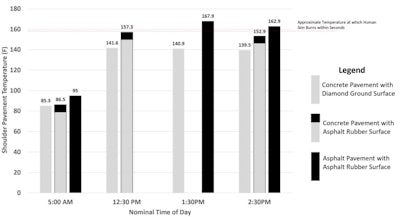 Figure 2. Pavement Shoulder Temperatures for Three Pavement Structures from August 5, 2021 Drone Infrared TestInternational Grooving & Grinding Association
Figure 2. Pavement Shoulder Temperatures for Three Pavement Structures from August 5, 2021 Drone Infrared TestInternational Grooving & Grinding Association
Figure 2 (above) indicates temperatures taken at the road shoulder. This location best represents the actual heat disparity between the different surface types since it is a non-trafficked area and consequently there is minimal convection cooling from traffic.
- Diamond-ground concrete surfaces remained cooler throughout an entire 24-hour period.
- Just before sunrise, diamond-ground concrete measured 1-10º F cooler than asphalt rubber surfaces.
- At peak temperature time (1:30 p.m.), diamond-ground concrete was 27º F cooler than asphalt pavement overlaid with asphalt rubber.
- At 2:30 p.m., diamond-ground concrete was 13-23º F cooler than the two asphalt rubber surfaces.
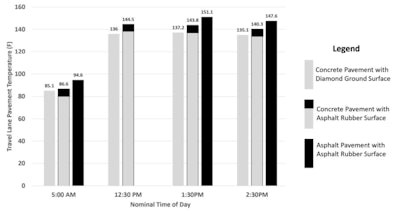 Figure 3. Pavement Travel Lane Temperatures for Three Pavement Structures from August 5, 2021 Drone Infrared TestInternational Grooving & Grinding Association
Figure 3. Pavement Travel Lane Temperatures for Three Pavement Structures from August 5, 2021 Drone Infrared TestInternational Grooving & Grinding Association
Figure 3 (above) represents the pavement temperature of concrete and asphalt rubber travel lane surfaces on eastbound SR202.
Research findings include:
- The diamond-ground concrete surface was again cooler throughout the entire 24-hour time period than either of the two asphalt rubber-overlaid surfaces.
- At sunrise, the diamond-ground surface was again 1-10º F cooler, and at peak daily temperature (1:30 p.m.) it was 7-14º cooler.
|
|
The ACPA had conducted similar studies in 2007, with results indicating that asphalt rubber is hotter during the entire 24-hour daily cycle than concrete pavements.
Diamond-Ground Concrete: The Cost Advantage
Diamond-ground concrete pavements also offer an enormous cost advantage compared to ARFC. In a 15-year period, rubberized asphalt needs to be fog sealed five times, as well as crack sealed two times. After the 15 years of service, it needs to be milled and replaced. In contrast, diamond-ground portland cement concrete pavement has an expected life span exceeding 30 years, with only minimal maintenance associated with spall repair and joint resealing on an as-needed basis. Furthermore, according to ADOT, “Costs associated with replacing rubberized asphalt are projected to increase by nearly 300% in the coming years. Between 2020 and 2024, rubberized asphalt replacement and pavement maintenance costs for highways in Maricopa County are estimated at nearly $200 million. That number is projected to increase between 2025 and 2029, to nearly $800 million.”
Extreme heat. Increased cost. Environmental impact. Death. As these threats become reality, citizens, as well as government agencies, are realizing it’s time for a change. Research makes it clear that light-colored pavements could have a positive impact on UHI. Combined with its other advantages, such as durability and lower cost to maintain, light-colored concrete pavements are part of a sustainable solution.
About the author
Larry Scofield is the Director of Pavement Innovation at the American Concrete Pavement Association and Director of Engineering & Research at the International Grooving & Grinding Association.
